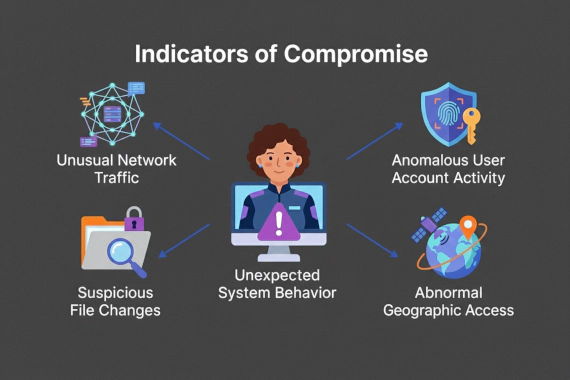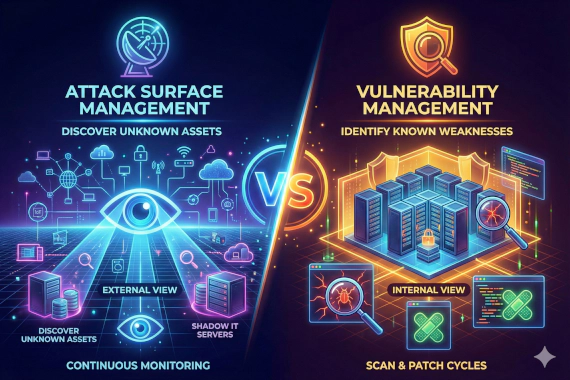Learn how to transform threat intelligence into budget approvals and board-level influence.
• Most CTI programs are like Pokemon games, collecting everything to look busy while accomplishing nothing strategic.
• Industry reports like the DBIR give you the ammunition to speak board language instead of security theater.
• Strategic intelligence shows executives why third-party vendors are your biggest breach risk, not how many threats you blocked.
• If you’re measuring alerts processed instead of breaches prevented, you’re doing it wrong.
Here’s what’s broken, 83% of organizations say threat intelligence improved their security (SANS 2024). Yet most CISOs still fumble basic board questions like “What’s our biggest long-term risk?” or “Why do we need $2 million more for security?”
This isn’t a data problem. Organizations drown in threat feeds, vulnerability alerts, and IOC lists. The problem is they think more data equals better security. They’re collecting everything when they should be analyzing what matters. That’s expensive theater, not strategy.
Third-party breaches doubled from 15% to 30% this year (2025 DBIR). Most threat intelligence programs never saw it coming. Why? Because they’re too busy playing whack-a-mole with tactical threats to notice the strategic risks that actually matter.
Let’s fix your broken CTI program.
What Is Strategic Threat Intelligence?
Strategic threat intelligence is the intelligence type almost everyone claims to produce and almost no one actually delivers.
It focuses on long-term trends and business impact for executive decision-making. Not CVE numbers. Not file hashes. Not the 47th slide about MITRE ATT&CK techniques that puts your board to sleep.
Your SOC needs to know which IP addresses to block today. Your board needs to know whether nation-state attacks will disrupt operations next year. These aren’t the same question.
Strategic threat intelligence focuses on long-term trends, adversary motivations, geopolitical developments, and organizational risks over months to years. It shapes security strategies and investment decisions for senior leadership.
Strategic intelligence answers questions like: Which long-term risks may destroy our ability to operate? Where should we invest the next $10 million in security budget? How do geopolitical threats affect our expansion plans into new markets?
The audience isn’t technical. It’s CISOs presenting to boards who control budgets, executives planning multi-year strategies, and risk managers prioritizing investments. The timeframe is months to years, not hours or days.
Here’s the test: If your “strategic” report includes technical indicators like IOCs or CVE numbers, it’s not strategic. It’s tactical intelligence dressed up in a PowerPoint.
Now that you understand what strategic intelligence actually is, let’s break down how it fits into the broader threat intelligence landscape.
What Are the Three Types of Threat Intelligence?
Threat intelligence exists on a spectrum. Strategic sits at the top (for executives who control money), tactical at the bottom (for security tools), and operational in the middle (for incident responders).
Strategic Intelligence: Executives, CISOs, board members need this for months-to-years decisions on business impact and investment priorities. Example: “Ransomware dwell time dropped to 6 days. We need faster detection capabilities.”
Operational Intelligence: SOC managers and threat hunters need this for weeks-to-months understanding of attacker behavior and TTPs. Example: “APT group uses RedLine stealer to harvest credentials, then sells them on Russian Market within 48 hours.”
Tactical Intelligence: SOC analysts and security tools need this for hours-to-days blocking of immediate threats. Example: “Block these 500 IP addresses attempting credential stuffing attacks.”
Most organizations have this completely backwards. They collect massive amounts of tactical data but can’t answer a single strategic question their board cares about. They spend millions on threat feeds that produce mountains of alerts but can’t justify why the board should give them another dollar.
This is the Pokemon problem. Gotta catch ’em all. Subscribe to 15 threat feeds, collect millions of IOCs, accomplish exactly nothing strategic. They think more data equals better security when they should be analyzing what actually matters.
The SANS 2024 survey found 75% of organizations use CTI for proactive threat detection. That sounds good until you realize “proactive” still means tactical. They’re detecting today’s threats slightly faster, not predicting next year’s business risks or informing budget decisions.
This confusion between intelligence types is killing your budget requests. Let’s clarify the distinction most CISOs blur.
What Is the Difference Between Tactical and Strategic Threat Intelligence?
Most CISOs blur these lines because they’re technical people promoted into business roles. They know how to block threats. They don’t know how to translate threats into executive language. This gap costs them millions in budget rejections.
Tactical intelligence is technical. The IP attacking your firewall right now. The file hash to block. The domain hosting malware. It changes constantly and has a shelf life measured in hours.
Strategic intelligence is business-focused. The trend showing third-party breaches doubled. The geopolitical analysis explaining elevated ransomware risk. The regulatory changes that will cost millions. It informs multi-year strategies.
Here’s the translation problem killing your credibility:
Bad: “We blocked 10,000 malicious IPs this quarter.”
Board’s internal response: “So what? Are we safer?”
Good: “Ransomware groups now deploy encryption within 6 days of initial access. Our current detection timeline averages 11 days, creating a 5-day gap where attackers can encrypt critical systems before we know they’re inside. We need to shrink that gap or accept that ransomware will succeed.”
See the difference? One reports busywork. One identifies business risk boards can evaluate and fund.
The brutal truth: Your board doesn’t care how many IPs you blocked. They care whether supply chain partners could compromise operations and destroy shareholder value. Strategic intelligence translates technical threats into business language.
If you can’t make that translation, you’re not ready to present to the board.
So where do you actually get this strategic intelligence? Let’s look at the sources that provide business-focused threat analysis.
Where Does Strategic Threat Intelligence Originate?
Strategic intelligence doesn’t come from the threat feeds your vendor sold you. Those produce tactical noise.
Industry Threat Reports like Verizon’s DBIR, Mandiant’s M-Trends, and IBM’s Cost of a Data Breach Report are strategic intelligence gold. They’re free, well-researched, and answer questions like “What percentage of breaches come from third parties?” Yet most CISOs skim the executive summary and go back to staring at SIEM alerts. They’re ignoring strategic gold to process tactical garbage.
Geopolitical Threat Analysis matters because nation-state activity creates cyber risk. Healthcare organizations facing North Korean ransomware groups need different strategic planning than financial services dealing with Chinese APTs.
Regulatory and Compliance Monitoring tracks changes before they become compliance requirements that cost millions. Organizations that anticipated SEC breach disclosure rules had time to build processes. Organizations that waited scrambled and looked incompetent.
Vendor Risk Intelligence is critical because third-party breaches doubled this year. If your strategic intelligence program doesn’t include monitoring supplier security posture, you’re missing the leading attack vector.
Open-Source Intelligence (OSINT) from security researchers and academic studies provides early warning before threats hit commercial feeds that charge $50K annually for recycled data.
Strategic sources provide context and trends, not just indicators. They answer “why this matters to the business” and “what’s coming next.”
Let’s look at specific examples to see how these sources work in practice.
What Is an Example of a Strategic Threat Intelligence Source?
Stop talking about abstract sources. Let’s get concrete.
Verizon 2025 DBIR: Third-party breaches doubled from 15% to 30% of all incidents. This tells CISOs they need to invest in vendor risk monitoring. That’s budget justification material backed by thousands of real incidents. Another insight: 30% of infostealer-compromised systems are enterprise-licensed devices. Your employees’ home computers are attack vectors requiring policy changes.
Mandiant M-Trends 2025: Ransomware median dwell time dropped to 6 days. This means your current 11-day average detection timeline guarantees ransomware succeeds. That’s an investment priority your board can understand.
Dark Web Credential Monitoring: Discovering your vendor’s credentials for sale on the dark web isn’t just a tactical alert. It’s strategic intelligence showing your third-party risk program has gaps you need to fix at a policy level. Breachsense provides this intelligence, giving strategic early warning of supply chain compromise before attackers exploit it.
Strategic sources provide business context, not just technical facts. They answer “what should we do differently at a strategic level.”
Now that you know where strategic intelligence comes from, let’s identify who actually needs it.
Who Can Benefit from Strategic Threat Intelligence?
Strategic intelligence serves specific audiences with one thing in common: they control budgets and set policies.
Strategic threat intelligence only works when integrated with enterprise risk management programs. Without risk context, CTI teams collect intelligence about threats that don't matter to the business. Integration ensures intelligence focuses on business-critical assets and processes.
CISOs and Security Executives need it to justify budget requests with risk metrics, report to boards in business language, and demonstrate they understand business strategy. The CISOs who can’t do this get replaced.
Board Members and Executives need it to understand long-term risks, make informed investment decisions, and evaluate CISO performance based on risk reduction instead of activity metrics.
Enterprise Risk Managers need it to quantify cyber risk probability and compare it to other enterprise risks using consistent metrics.
Business Unit Leaders need it when planning market expansion, evaluating acquisitions for cyber risk, and making technology decisions with security implications.
If you’re briefing someone who doesn’t control budget or set strategy, you’re giving them the wrong intelligence.
Understanding who needs strategic intelligence leads to the next question: how do they actually use it? Let’s explore the specific business decisions strategic intelligence drives.
What Are Use Cases for Strategic Threat Intelligence?
Budget Justification is the number one use case because this is where most CISOs fail spectacularly.
Bad approach: “We need $2M for threat intelligence tools because they’re important.”
Board’s response: “No. Next agenda item.”
Strategic approach: “Credential compromise causes 22% of all breaches (2025 DBIR). We have 500 employees with privileged access. Dark web credential monitoring provides 3-4 weeks of early warning at $200K annually. The average breach costs $4.81M. Preventing one credential-based breach covers the cost for 24 years. ROI is 24:1.”
Board-Level Risk Reporting needs risk gaps, not technical metrics. Strategic intelligence identifies specific gaps with industry benchmarks and recommended actions.
Third-Party Risk Management justifies vendor risk programs with hard numbers, prioritizes which vendors to monitor, and establishes vendor security requirements that prevent breaches.
Regulatory and Compliance Planning helps organizations stay ahead of changes instead of scrambling reactively.
Mergers and Acquisitions needs strategic intelligence to assess cyber risk in acquisition targets. Questions like “Has the target been breached?” inform both go/no-go decisions and pricing. A target with security gaps is worth less.
These use cases sound straightforward. Most organizations still fail at all of them. Here’s why strategic intelligence programs fail.
What Are the Challenges in Gathering Strategic Threat Intelligence?
Here’s the uncomfortable truth: 93% of organizations claim to have in-house CTI capability (SANS 2024), but claiming you have it and delivering it are very different things.
Confusion Between Intelligence Types is expensive. CTI teams collect everything and call it strategic intelligence because they put it in a monthly report with nice graphs. This is the Pokemon problem again.
Data is raw facts. Information is organized data. Intelligence is analyzed information relevant to specific decisions. Tactical IOCs aren’t strategic intelligence. Even aggregated tactical data (we blocked 10K threats) isn’t strategic. It’s activity metrics that mean nothing to your board.
The Technical-to-Business Translation Gap destroys careers. CISOs present MITRE ATT&CK techniques to boards wanting business impact in dollar terms. They report vulnerability counts when executives want operational risk. They discuss threat actor campaigns when CFOs want ROI calculations.
Learning to translate takes practice and humility. Most CISOs have one but not the other.
Overemphasis on Tactical Over Strategic happens because tactical intelligence is easier to collect and measure. Organizations optimize for what they can measure, so CTI teams spend 90% of time on tactical intelligence even though strategic intelligence drives the decisions that matter.
Alert Fatigue and Data Overload bury strategic insights. Here’s the ironic part: More threat feeds make strategic intelligence harder. Each feed adds tactical noise. Each alert demands attention. The tactical work crowds out strategic analysis until you’re left with a team that processes alerts but can’t answer strategic questions.
Proving ROI is the hardest challenge. How do you prove threat intelligence prevented something that didn’t happen? Organizations that solve this tie CTI to business outcomes: “Dark web monitoring detected compromised vendor credentials 3 weeks before public disclosure. Revoking access prevented breach. Public breaches in our industry cost $4.8M on average. We prevented one. ROI is measurable.”
These challenges are real, but they’re not insurmountable if you’re willing to change how you work. Here’s how to fix your strategic intelligence program.
How Do You Overcome the Barriers to Strategic Threat Intelligence?
Start with Risk Management, Not Intelligence Collection. Stop collecting intelligence then figuring out what it means. Start with business priorities and collect intelligence that informs those priorities. Ask executives what keeps them up at night, then collect intelligence that answers those questions.
Develop a Translation Framework that answers: What business process does this threat target? What’s the probability of attack? What’s the business impact? What’s the cost to mitigate? What decision are we asking executives to make?
Example: “Critical vulnerability CVE-2025-XXXXX, CVSS 9.8” becomes “Our VPN has a critical vulnerability being exploited. 500 remote workers use this daily. Recommendation: Emergency patching this weekend. Alternative: Accept risk of network compromise.”
Measure What Matters: Budget decisions informed by intelligence, prevented breaches with dollar values, risk reduction in business terms. Stop measuring IOCs processed.
Separate Strategic and Tactical Programs. They’re different jobs requiring different skills. Tactical CTI feeds SOC. Strategic CTI reports to the CISO and focuses on executive communications.
Invest in Executive Communication Skills. CISOs need to learn business language or fail at strategic intelligence. This is non-negotiable.
Use Vendor Intelligence to Fill Gaps. Use DBIR and M-Trends (free), geopolitical analysis, and dark web monitoring. Breachsense provides dark web credential monitoring that shows where access management has gaps and which suppliers pose risk.
Create Feedback Loops. Track what executives fund and what policies change after your briefings. This feedback improves future intelligence.
The Bottom Line on Strategic Threat Intelligence
Most organizations collect threat intelligence backwards. They gather tactical IOCs when executives need strategic intelligence for business decisions.
The fix isn’t more threat feeds. The fix is learning what strategic intelligence actually is: long-term trends and business impact analysis that drives budget, policy, and investment decisions.
Third-party breaches doubled this year. Ransomware dwell time dropped to 6 days. Credential compromise causes 22% of all breaches. That’s strategic intelligence. It tells executives where to invest using language they understand.
Your board doesn’t care how many IPs you blocked. They care whether supply chain partners could compromise operations. Strategic intelligence translates technical threats into business language executives use to make decisions.
Organizations that get this right integrate CTI with risk management, develop translation frameworks, and measure effectiveness through business outcomes, not activity metrics.
Strategic threat intelligence isn’t about collecting more data. It’s about collecting the right intelligence for the right audience and presenting it in language that drives decisions.
Ready to see how credential monitoring feeds strategic intelligence? Breachsense monitors dark web markets for compromised credentials across your organization and supply chain. Discovering supplier credentials for sale weeks before public disclosure gives you the early warning needed to prevent breaches instead of documenting them. Book a demo to see how it works.
Strategic Threat Intelligence FAQ
The five phases of the threat intelligence lifecycle are planning (defining objectives and goals), collection (gathering data from internal and external sources), processing (organizing and normalizing raw data), analysis (turning processed data into actionable intelligence), and dissemination (sharing intelligence with stakeholders). Strategic intelligence follows this same lifecycle but focuses on long-term business questions rather than tactical indicators.
The three types of threat intelligence are strategic, operational, and tactical. Strategic intelligence supports long-term executive decisions over months to years. Operational intelligence helps incident responders understand attacker behavior over weeks to months. Tactical intelligence provides immediate IOCs for blocking threats over hours to days. Each serves different audiences and timeframes.
Tactical threat intelligence focuses on immediate, technical indicators like IP addresses, file hashes, and malware signatures that SOC teams use to block threats in real-time. Strategic threat intelligence focuses on long-term trends, business impact, and geopolitical risks that inform executive decisions and resource allocation over months to years. Tactical intelligence is technical and fast-changing. Strategic intelligence is business-focused and slow-changing.
Industry threat reports like Verizon’s DBIR and Mandiant’s M-Trends provide strategic intelligence on breach trends and attacker behavior. Geopolitical threat analyses, regulatory change monitoring, and vendor risk assessments also serve as strategic intelligence sources. Dark web credential monitoring can provide strategic intelligence when compromised supplier credentials indicate supply chain risk requiring policy changes.



